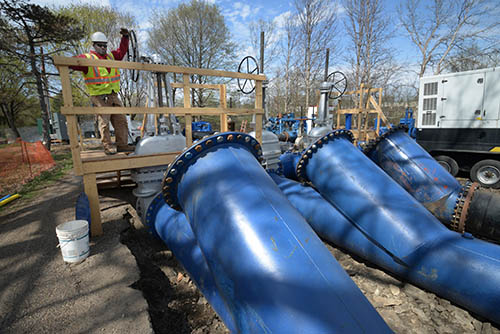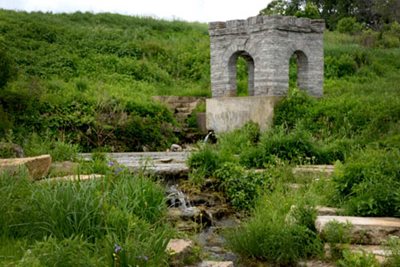 Metropolitan Council Environmental Services, which operates the regional wastewater collection and treatment system, received the Public Works Project of the Year Award on Nov. 19 from the Minnesota Chapter of the American Public Works Association. The award recognizes the successful construction of a project to rehabilitate an aging sewer near Minnehaha Park in south Minneapolis.
Metropolitan Council Environmental Services, which operates the regional wastewater collection and treatment system, received the Public Works Project of the Year Award on Nov. 19 from the Minnesota Chapter of the American Public Works Association. The award recognizes the successful construction of a project to rehabilitate an aging sewer near Minnehaha Park in south Minneapolis.
“This project’s complexities and challenges led us to selecting it for our Project of the Year Award,” said Sarah Lloyd, chair of the association’s Minnesota Awards Committee. “Major wastewater conveyance projects rarely attract public attention, and yet they are vital to protect the health and welfare of the public and surrounding environment. This was a great project from start to finish with its detailed design, innovative construction techniques, and community and agency engagement.”
Among the construction challenges that the Environmental Services project team worked hard to overcome were:
- Working as much as 75 feet below ground
- Maintaining the flow of millions of gallons of wastewater daily through temporary pumps and pipes throughout the two years of construction
- Avoiding impacts to a rare and protected groundwater resource
- Working with more than 12 unique public stakeholder groups in the center of an urban area and a high-traffic park
“This project presented some unique challenges that our staff met with partnerships, innovation, and excellence,” said Metropolitan Council Member Abdirahman Muse, whose district includes the project area. “We are proud of the work done to plan and execute this project.”
Keeping aging structures in good working order
The $20 million project involved rehabilitation of underground wastewater sewers and other structures adjacent to the park that date back to the mid-1930s. A key piece of the project was rebuilding a relief structure designed for a time when a combination of stormwater and wastewater flowed through pipes. The structure diverted higher than normal, rain-induced flows to the Mississippi River when necessary to help prevent upstream wastewater backups, open discharge of wastewater, and damage to downstream sewer facilities.
The combined stormwater and wastewater sewers were separated in the 1990s, and the Met Council has worked with cities since then to reduce the excess inflow and infiltration of clear water into wastewater sewers. As a result, we have not had a wastewater release at this structure in more than 17 years.
However, it is essential to keep this structure in good working order, along with nearby deep tunnels and specially designed shafts that carry wastewater down to these sewers. Because of the age of these facilities and their corrosive environments, we rehabilitated them to provide safe, reliable wastewater service well into the future.

Unique challenges of the Minnehaha area project
Completion of the project, which came in on time and budget, is the result of more than eight years of planning, design, and construction. Project highlights include:
- Innovative construction management techniques: The unique shape of the 6-foot tall, inverted horseshoe sewer required installation of custom-built liners. A temporary wastewater conveyance system was carefully designed to be safe and reliable, and was monitored around the clock to provide continuous operation.
- Excellent safety performance: The project team developed and implemented ventilation strategies to support the health and safety of construction workers in enclosed spaces. The workspace air flow was monitored continuously and was frequently adjusted for changes in atmospheric and work conditions.
- Strong community engagement: Through meetings with the Minnehaha Creek Watershed District, Friends of Coldwater Spring, the National Park Service, and the Mendota Mdewakanton Dakota Tribal Community, the project team developed an understanding of the natural, cultural, and historic significance of the spring and was able to adapt construction techniques to avoid impacts.
- Minimal public disruptions: Through proactive public involvement, the Met Council communicated with and received valuable input from the public and other impacted stakeholders. This input informed sustainable design concepts to minimize negative impacts related to noise, odors, traffic, and restricted use of the park.
Video: Planning and maintaining the regional system of wastewater pipes and treatment plants
Metropolitan Council Environmental Services 2021-2026 Capital Program